Wondermondo 🢖 World 🢖 Wonders of Europe 🢖 Wonders of Serbia
Territory
Wonders of Serbia
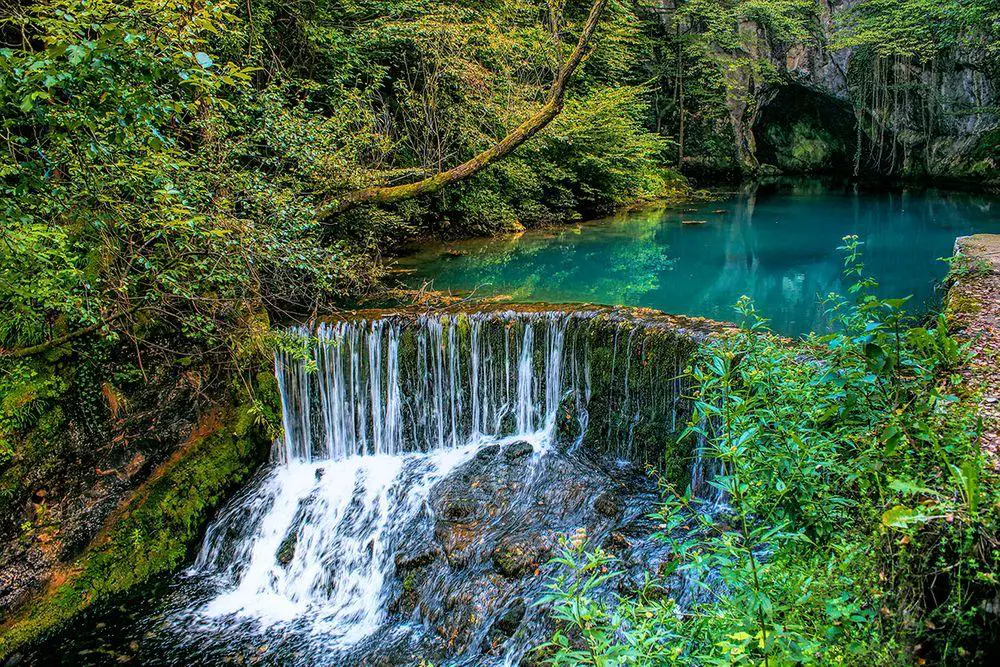
 Highlights
Highlights
Serbia is a diverse country – both with undulating hills, river plains, and also very impressive mountains. The most beautiful and interesting landmarks in Serbia are:
- Monasteries – Serbia has its own branch of Christianity – Serbian Orthodox Church and in medieval times numerous monasteries were built in localized Byzantine architectural styles. These buildings contain numerous values of art such as frescoes of high artistic quality.
- Fortifications – as a country close to the border of great civilizations Serbia for long centuries has been involved in fierce warfare. Thus it is no wonder that some of the most impressive structures here are major fortification systems and castles.
Map with the described wonders
If you see this after your page is loaded completely, leafletJS files are missing.
 Top 25 wonders of Serbia
Top 25 wonders of Serbia
Geological wonders
Đavolja Varoš
Toplica
Group of 202 earth pyramids that are 2 – 15 m tall. These pyramids have formed in the soft volcanic rock and are capped with hard andesite stones. Wind creates eerie sounds among these pyramids and these sounds have created bad fame for this area.
Vratna Gates
Bor
Group of three large natural arches: Little Prerast (height 34 m, width 33 m), Big Prerast (height 26 m, width – 23 m) and Dry Prerast (height – 20 m, width 15 m).
Iron Gates (Đerdap gorge)
Braničevo
Magnificent gorge of the Danube River where the river is squeezed and is just 150 m narrow but very deep – up to 82 m (Gospođin vir). The tallest cliffs rise up to 300 m high.
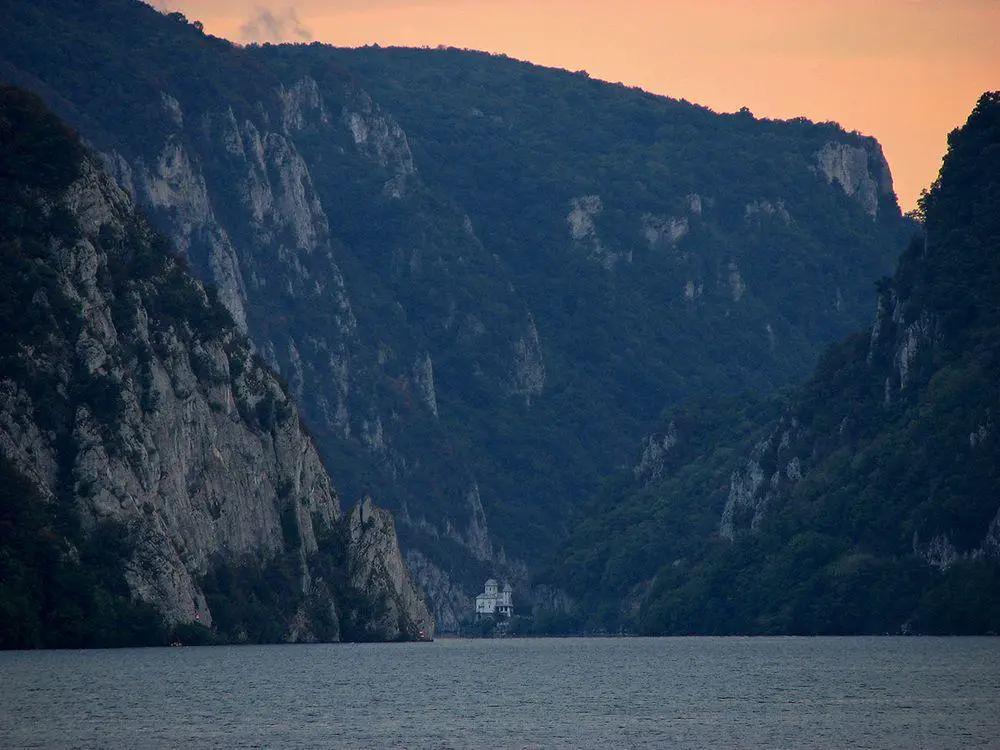
River Mala spring
Braničevo
Powerful spring – beginning of a river. Spring is a deep blue lake with an unknown depth. It has been dived more than 70 m deep. The output of the spring reaches 15,000 l/s.
Biological wonders
Deliblatska Peščara
South Banat
The largest sandy terrain in Europe – some 380 km² large area with inland dunes. In order to stop the movement of dunes this area has been planted with trees but here still are found numerous rare species of steppe plants and animals.
Archaeological wonders
Gamzigrad (Felix Romuliana)
Zaječar
Remnants of a splendid Ancient Roman city with an extensive imperial palace. The development of the city started in 298 AD and the city persisted until the middle of the 5th century.
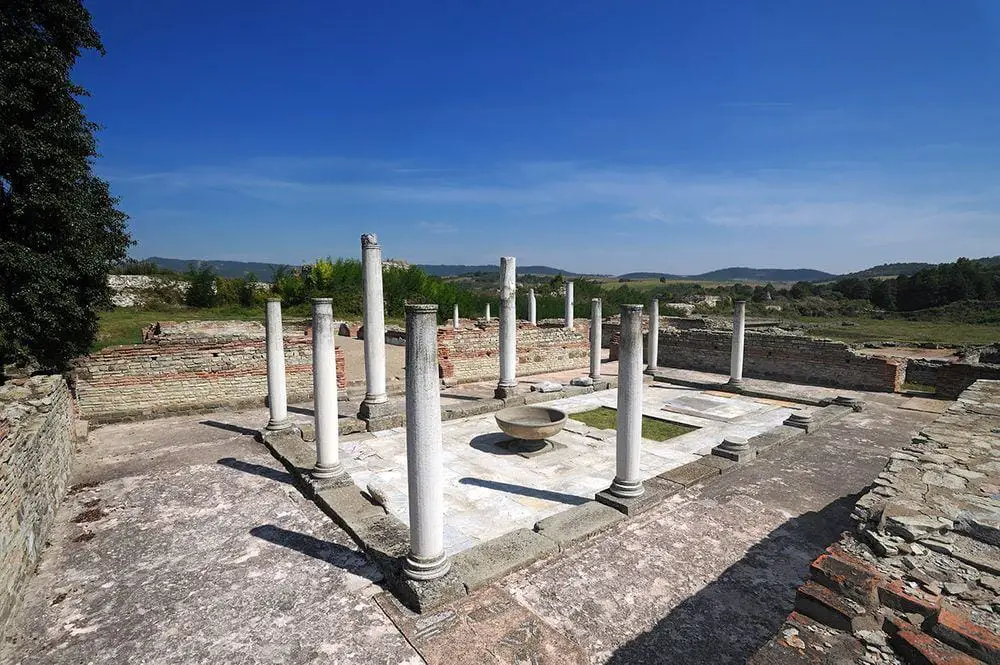
Trajanova Tabla (Tabula Traiana)
Bor
An ancient monument – a relief and inscription on a marble cliff at Donau. It was made around 100 AD to commemorate the construction of an especially complex part of the road at the Iron Gates of Donau. Relief is 3.2 m wide and 1.8 m high.
Lepenski Vir
Braničevo
Unusual and very important archaeological find – Mesolithic settlement that was inhabited starting from 9500 – 7200 BC. Around 6300 – 6000 BC here were built significant structures and monumental sculptures. The site has been relocated before the flooding of the Danube valley. This is one of the earliest known permanent human settlements in the world.
Vinča (Belo Brdo)
Belgrade
One of the largest Neolithic settlements in Europe, inhabited since 5700 BC. The cultural layer here is up to 9 m thick. The site has provided rich and important finds that show that very advanced culture for its time existed here. Some of the most interesting are Vinča symbols – signs on artifacts that might represent the world’s oldest proto-writing system.
Trajan’s Bridge
Bor
Remnants of a giant bridge that was built in the time of Emperor Trajan in 103 – 105 AD. This arched bridge crossed the Danube and was 1,135 m long. It had stone supports – 20 pillars and a wooden superstructure.
Architecture wonders
Manasija (Resava)
Pomoravlje
This Serbian Orthodox monastery was founded in the time period between 1406 and 1418 and is an outstanding example of Serbian medieval architecture (Morava architectural school) – representative of the Late Byzantine style. The monastery contains a church, refectory, and fortification walls with 11 towers. Some frescoes from 1418 have been preserved as well as many characteristic decorations.
Golubac Fortress
Braničevo
Ruins of a very impressive fortress that was built on a cliff rising over the Danube. Most likely it was built in the early 14th century. Parts of the fortress are flooded.
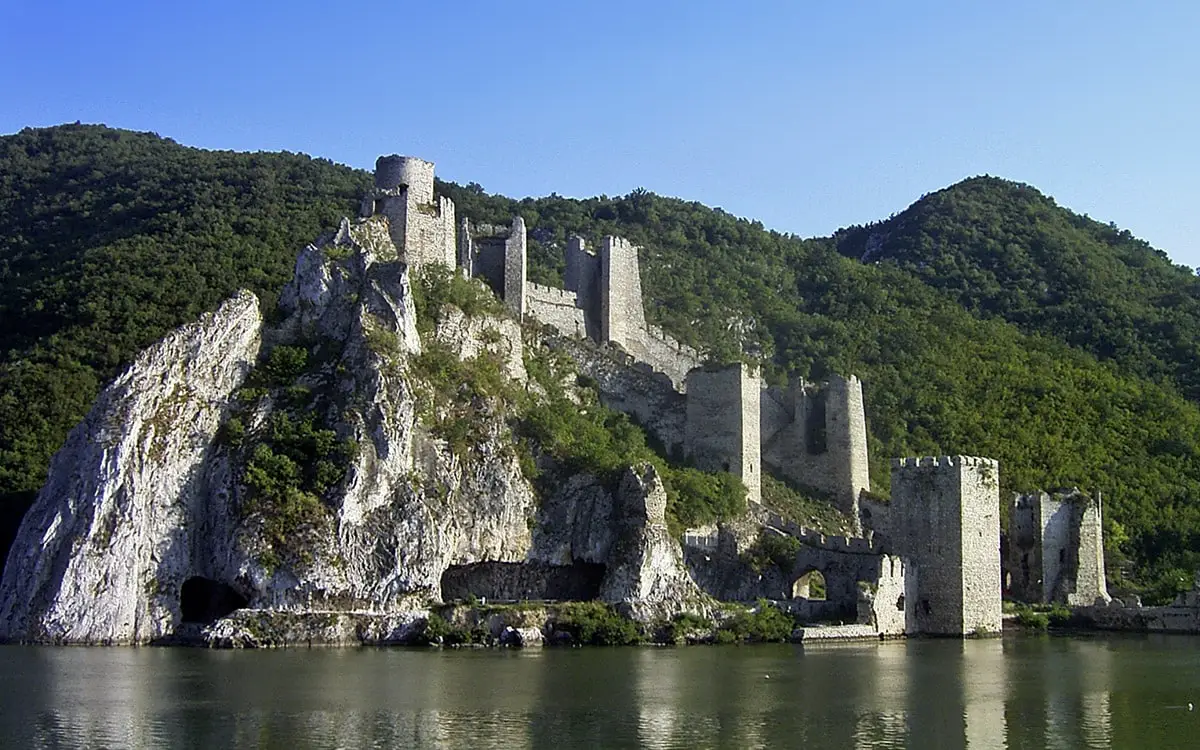
Sirogojno
Zlatibor
Well preserved historical village with authentic architecture and home utensils. It operates as an open-air museum.
Studenica Monastery
Raška
One of the largest and most interesting Serbian monasteries, established in 1190. Fortified, contains various art values but especially valuable are the 13th and 14th-century Byzantine style frescoes.
Smederevo Fortress
Podunavlje
A fortified medieval city that for a while was the capital of Serbia. This extensive fortress was constructed between 1427 and 1430. Fortification walls are 1.5 km long, with 25 towers, each some 25 m high. Inside the walls, at the Danube is the massive castle itself.
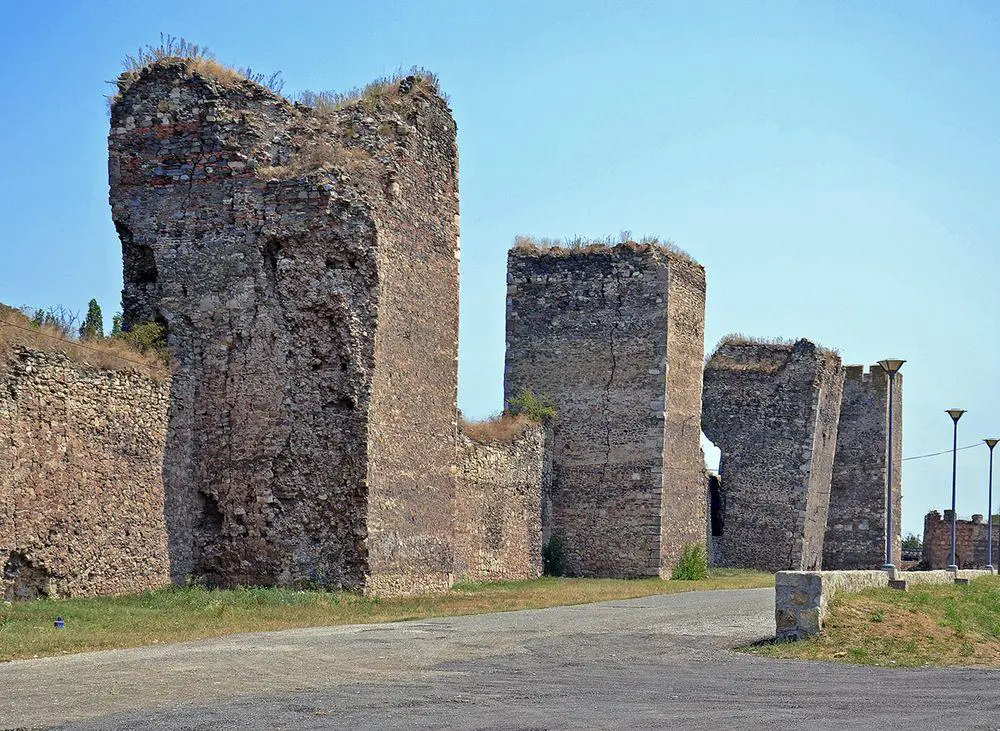
Crna Reka Monastery
Raška
This monastery was built in an exotic location – in a gorge. The monastery is “glued” to the vertical wall of the gorge and can be accessed over a footbridge. The cave church in it has valuable frescoes from the 16th century.
Belgrade Fortress (Singidunum)
Belgrade
The historical fortified core of Belgrade. This is an ancient fortress with a complex building history.
Ravanica
Pomoravlje
This Serbian Orthodox monastery was built in 1375 – 1377 and started a new tendency in the local architecture of churches and monasteries – Morava architectural school, a branch of Late Byzantine architecture. The church is adorned with frescoes that were painted in 1385 – 1387.
Our Lady of Ljeviš church
Prizren
Serbian Orthodox church that was built in 1306 – 1309. Although the church has high cultural value, including such art values as Byzantine frescoes, it is in bad condition.
Ljubostinja
Rasina
This Serbian Orthodox monastery is one of the best examples of the Morava architectural school and was constructed in 1388 – 1405. The best preserved and most interesting is the church with rich ornamentation and remnants of medieval frescoes.
Mileševa monastery
Zlatibor
This old monastery was founded in the time period between 1234 and 1236. The church of this monastery contains some of the most valuable medieval frescoes in Serbia, such as "White Angel" – one of the most beautiful works of art in medieval Europe.
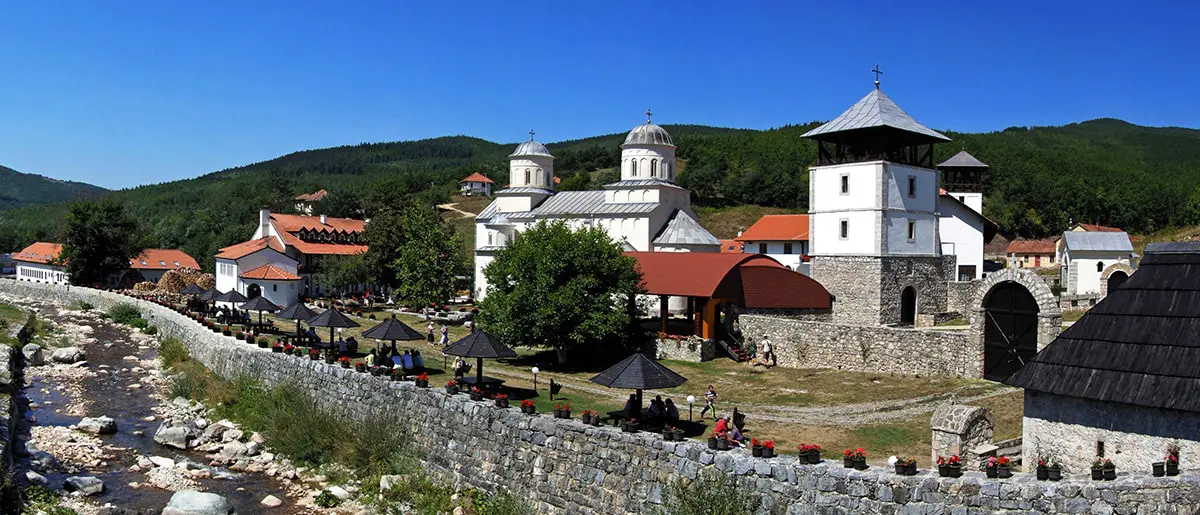
Sopoćani Monastery
Raška
A once important monastery that was built in 1259 – 1270. Now only the Sopoćani Church of the Holy Trinity remains, other structures are in ruins. The church is adorned with frescoes that were painted around 1263 – 1270 and belong to the best examples of Byzantine art.
Đurđevi stupovi
Raška
This monastery was built around 1170 and was quite important. The monastery has a unique style of architecture that blends together Byzantine and Romanesque styles. The interior is adorned with valuable Byzantine frescoes.
Ras Church of the Holy Apostles Peter and Paul (Petrova Church)
Raška
The oldest existing church in Serbia. Foundations of the church are the oldest ones – built during the Roman rule in the 4th century with some extensions made in the 7th and 9th centuries. The church contains frescoes from the 10th century as well as later frescoes from the 12th and 13th centuries. Next to the church is a medieval graveyard with numerous stone crosses.
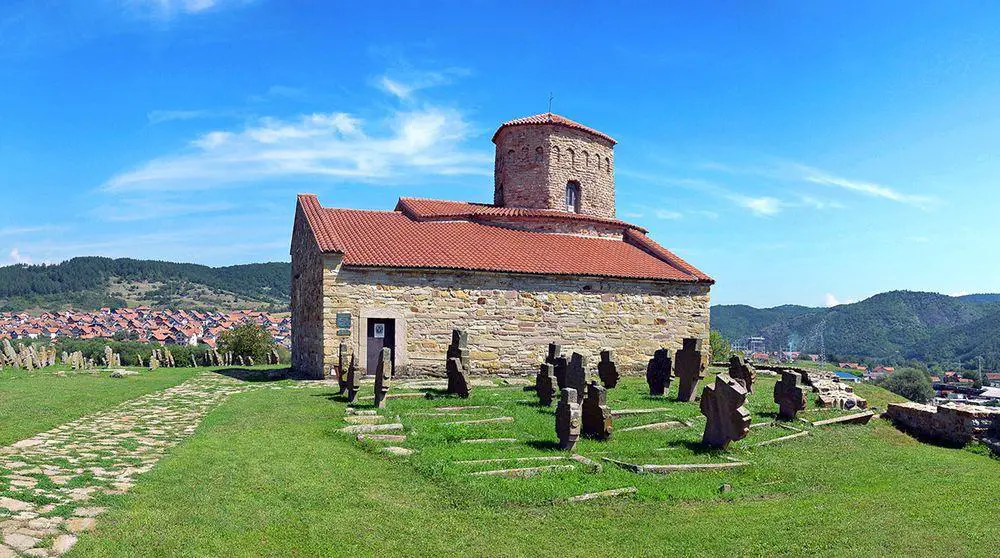
Kuršumlija Church of St.Nicholas
Toplica
One of the best examples of Raška school in Byzantine architecture. This church was constructed in three stages in 1152 and 1166. Some frescoes from the 14th century have been preserved.
 Recommended books
Recommended books
DK Eyewitness Travel Guide: Serbia
Explore one of Europe’s best-kept secrets, from the stunning Manasija monastery, St. Sava’s Cathedral, and Kalemegdan Fortress to Tara National Park and the lively Dragačevo Folk Festival. Let this first edition guidebook lead you on a walking tour of Belgrade, a boat trip on the Danube River, a tour of the monasteries of Fruška Gora, and much, much more.
Serbia – Culture Smart!: The Essential Guide to Customs & Culture
Serbia, a landlocked country at the crossroads of Central and Southeastern Europe, covers the southern part of the Pannonian Plain and the central part of the Balkans. The dominant power in the former Yugoslavia has had bad press in the West. However, the truth is much more nuanced and interesting than that portrayed by the media. Serbia is a country with wonderful scenery, architectural riches, and a vibrant arts scene, waiting to be discovered by Westerners.


